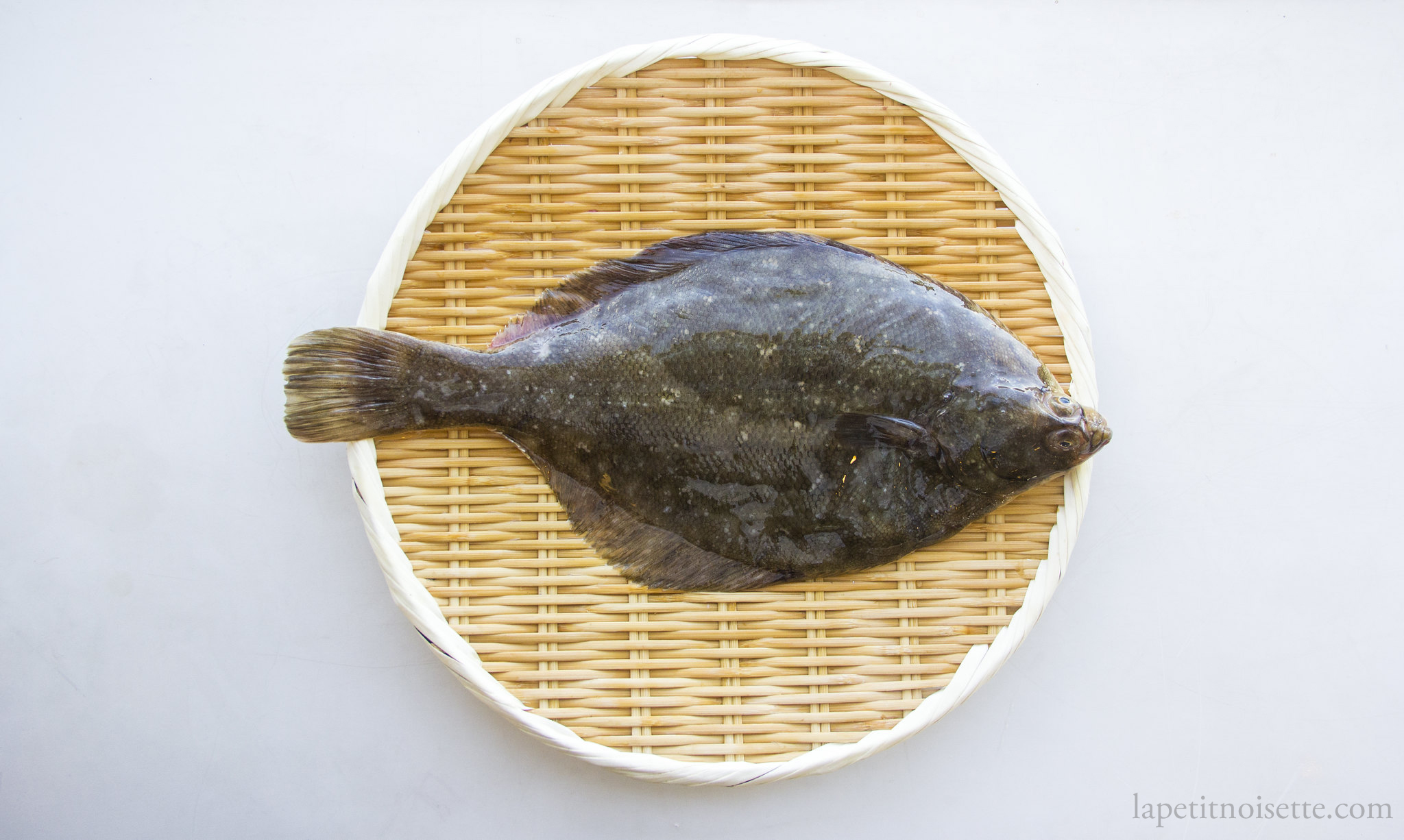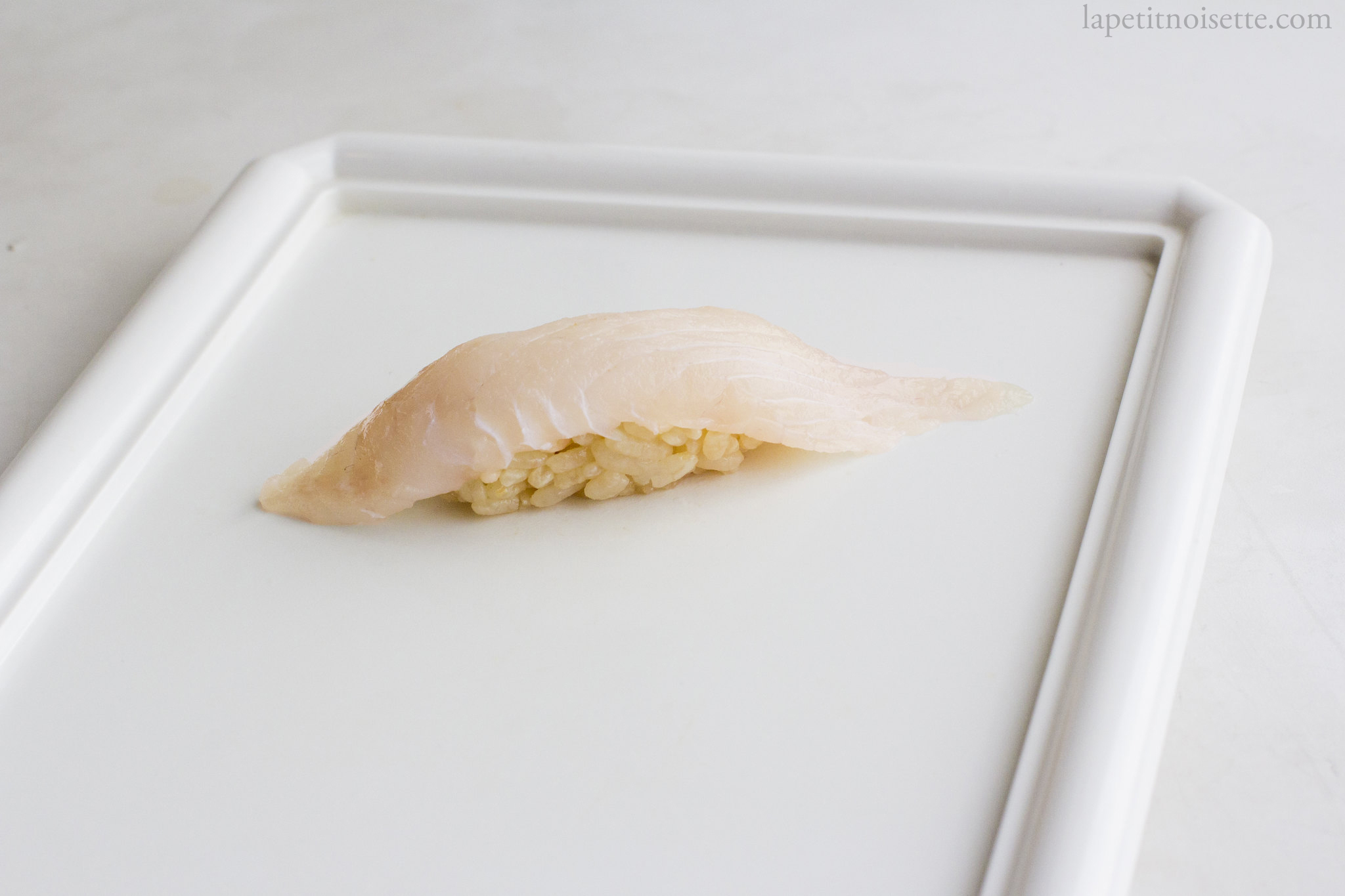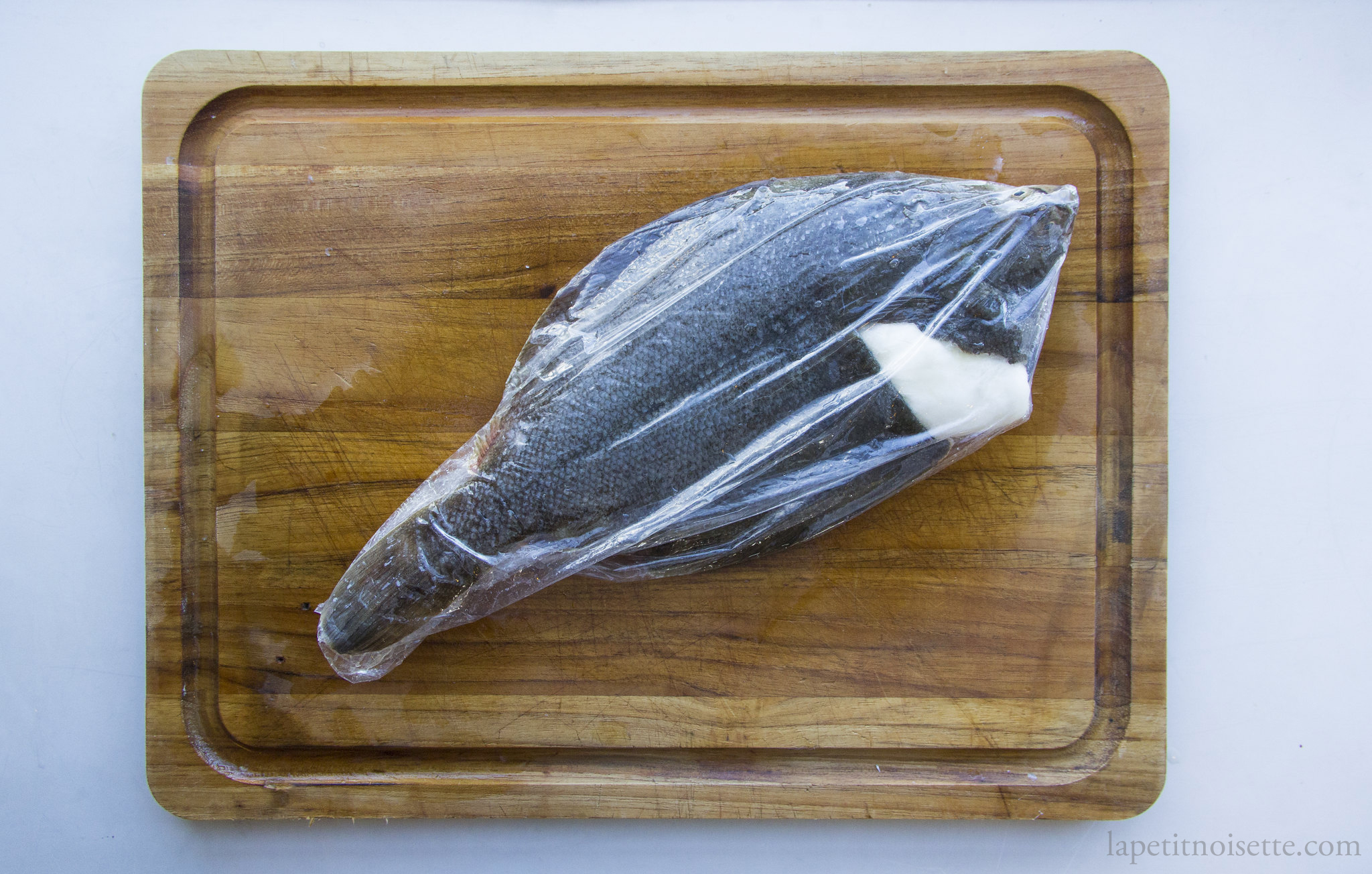The write up for Mako Garei can be found alongside Hirame as they both are flatfish.

In short, Mako Garei, which has both eyes on the right side resides in the Pleuronectidae family. This family contains certain species of Halibut and soles, but the Mako Garei is still classified as a right-eyed flounder. Mako Garei is in season from the start of spring to the end of summer.
Just like Hirame, the taste of Mako Garei is subtle and is more appreciated for its texture. In order to improve the taste and texture of Mako Garei, larger ones are sometimes aged for 2 to 3 days. This allows the enzymes to work on the fish, increasing it’s glutamate acid content and making its texture softer. Read about fish ageing to learn more.
The scales of Hirame and Mako Garei are also very tough and therefore usually cut away with a Yanagiba knife instead of using a fish scaler. This is done even if the skin of the flatfish is eventually removed before being served as sushi.

In the example shown below, the Mako Garei is wild caught and weights around 1kg in size. The scales on this younger Mako Garei are soft enough to be removed with a fish scaler, which is what I have done in the example below.
Edomae-style preparation of Mako Garei:
After washing the fish in cold water, start by descaling the fish. We descale the fish using a urokotori (鱗取り), a traditional Japanese fish scaler. Run the scaler against the direction of scale growth to most efficiently remove them. Wash away the scales and slime with cold water. Whilst descaling, we run a small stream of cold water onto the fish from the tap to prevent any scales from flying about. Scale both sides of the Mako Garei.

Next, cut just below the pectoral fin of the fish to open the belly cavity. Make a cut down the belly of the fish starting from just below the head.
Open up the entire fish cavity and pull away the innards and gills, cutting away the point at which the gills are attached to the fish.

Insert fish paper (Magu roll/マグロッ) or paper towels into the stomach cavity and head cavity of the fish. This is to absorb any excess blood or moisture from inside the fish that would otherwise rot during ageing.

Place the fish inside a large plastic bag and remove all the air from the bag by bunching the end of the plastic bag together and sucking it out with your mouth. Alternatively use a vacuum pack machine. This minimises air exposure during ageing. Tie the end of the bag to prevent any air from entering. Alternatively, if using a vac pack machine, the machine should automatically seal the bag.

The fish is now ready for ageing. Place in a fridge set at 1-2°C for 1 to 2 days as described here.
After ageing, cut open the bag and remove the fish. Discard the paper towels and place the fish on a chopping board. Cut a straight line from the top of the remove head all the way down following the backbone to the tail.

Insert the tip of the blade underneath the flesh from the previous cut, angling the blade downwards. Using long cutting motions, slight the blade between the bones extending from the backbone and the flesh, slowly teasing out a fillet. You should be able to feel your blade sliding along the bones, reducing wastage.
Above the fins of fish, cut into the skin of the fish to help release the fillet. Make another incision at the tail and collar of the fish to completely free the fillet from the bones.

Repeat the process to remove the second fillet on the same side.

Turn the fish over and repeat the same process to obtain a total of 4 fillets.
Generously salt a colander and place the fillets on a colander. Salt the flesh of the fish as well.
Allow to rest for 20 to 25 minutes depending on the size. During that time, remove the pin bones of the fish. After salting, wash off the salt and place the fillets skin side down on a chopping board.
Remove the skin off the fillets by making a small cut underneath the tail of the fillet between the flesh and skin. Start by cutting into the flesh and stopping just at the skin. When the blade just touches the skin, use a back and forth motion on the skin to gently separate the fresh from the skin whilst angling the blade until it is flat. The blade should remain still whilst you only move the skin. Refer to the recipe for hirame for images.
Continue the cutting motion until all the skin has been removed from the flesh. If the skin breaks halfway, don’t worry and start from the other end of the fillet. Using a paper towel to grip the skin of the fish allows you to have a more stable hold on the fillet, making it easier to cut.
Just like Hirame, the Mako Garei also has the little flesh on the fin or Engawa in Japanese (えんがわ/縁側). As the most exercised part of the fish, this part is more chewy and stronger in flavour, making it a prized piece of sushi. It is extremely rare, with only around 15 pieces being able to be made from a 2kg Mako Garei.